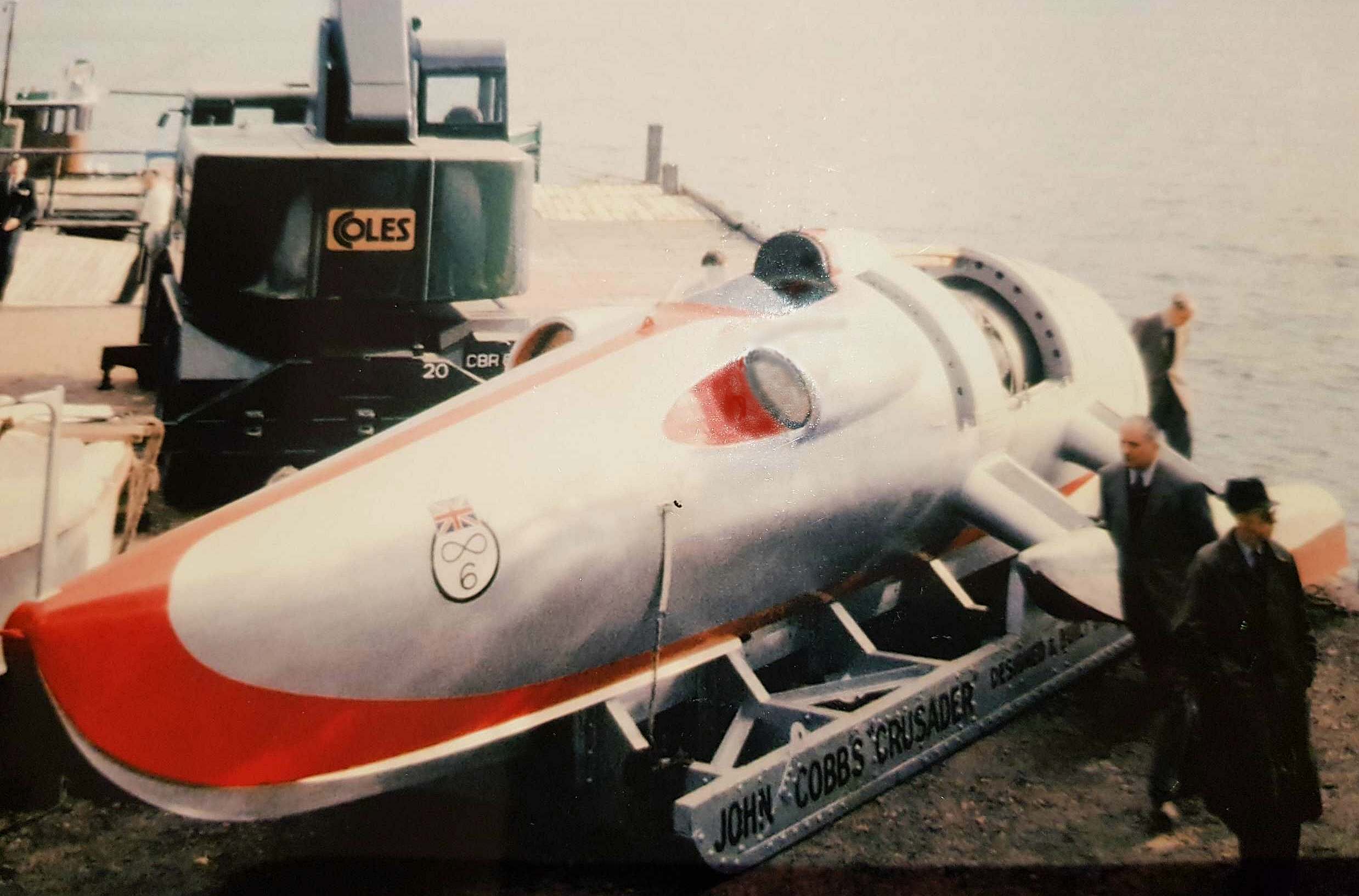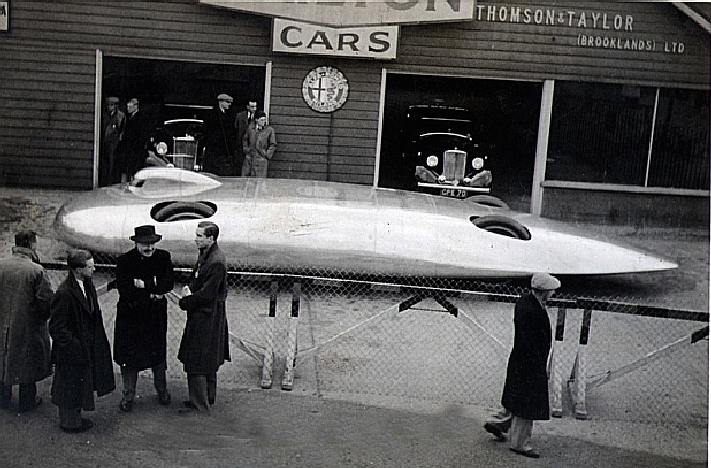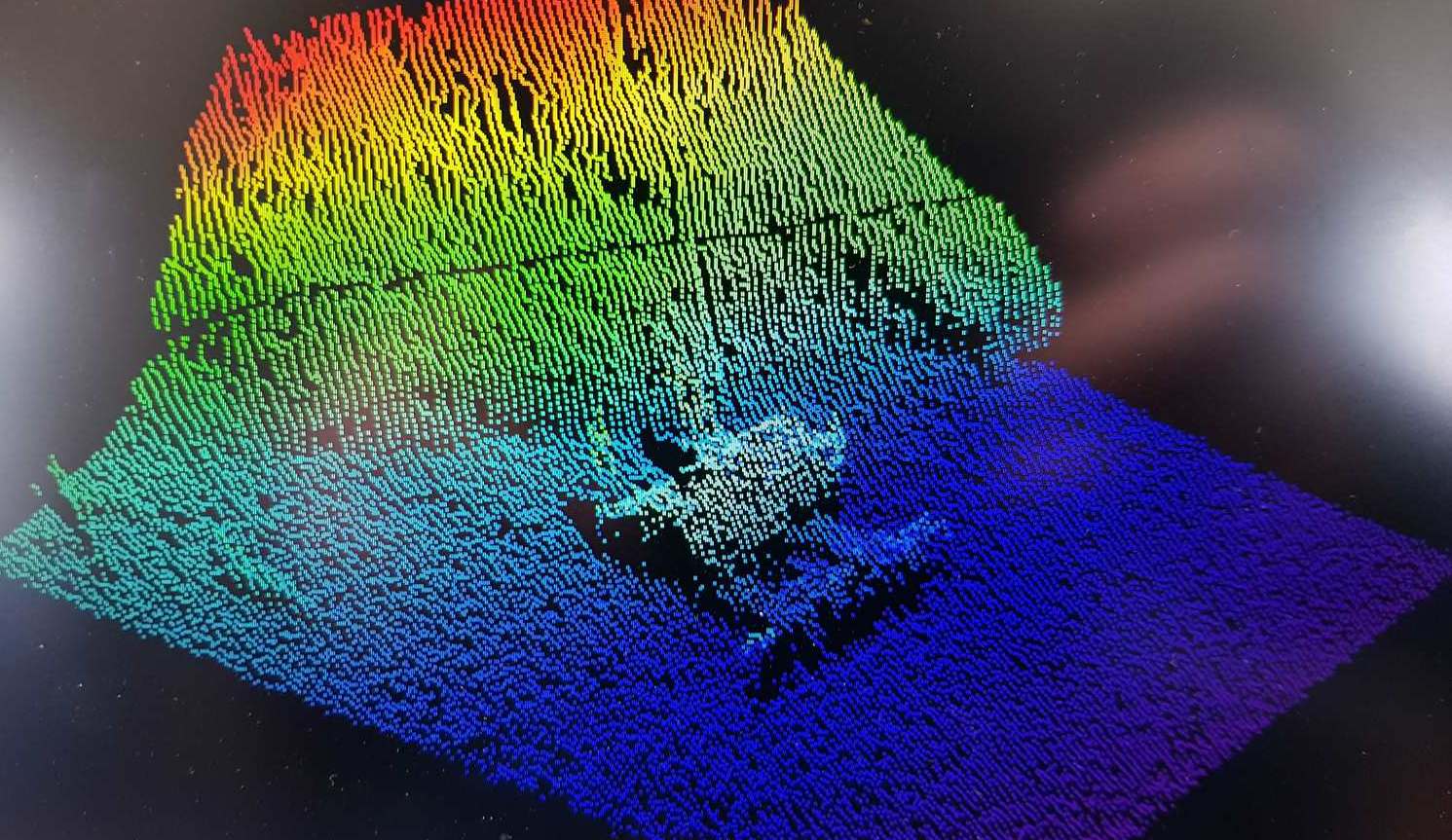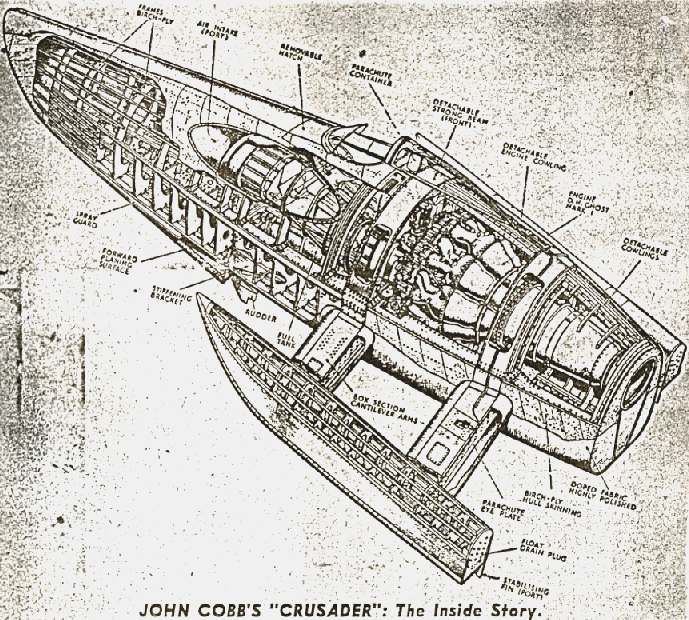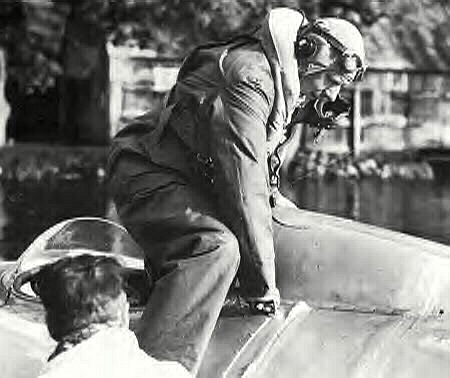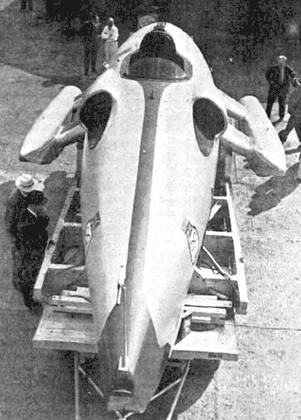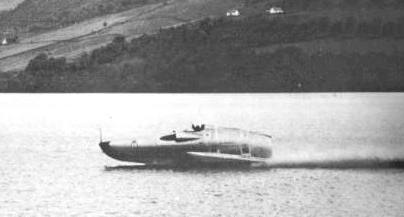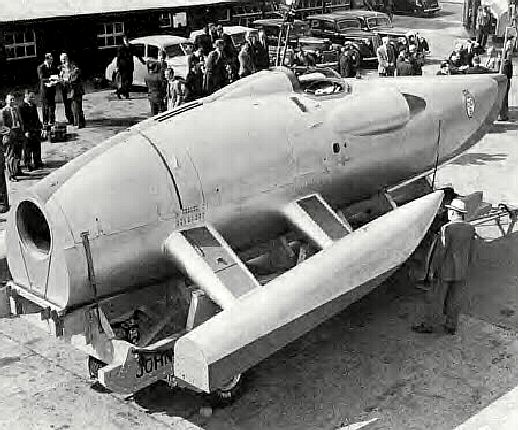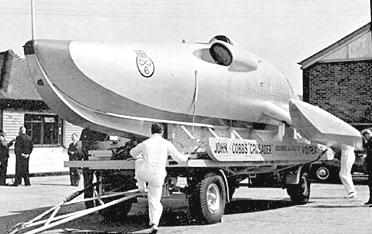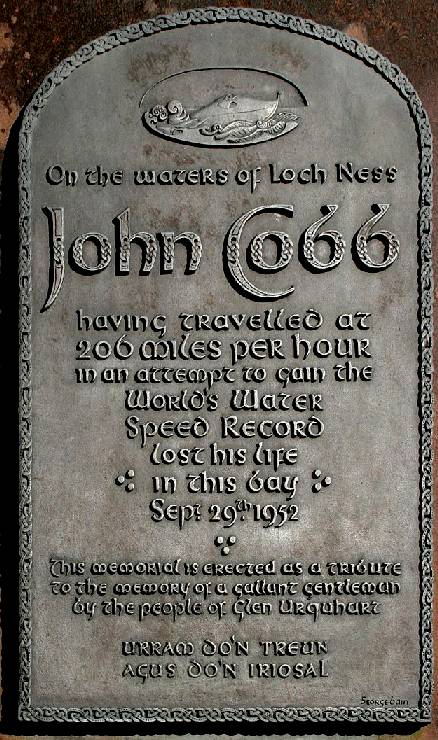|
JOHN COBB'S CRUSADER
AUTOMOTIVE A TO Z CHARITY CLIMATE CHANGE CONTACT EVENTS FUEL CELLS HYDROGEN UTILITIES PLEASE USE OUR A TO Z SITE INDEX TO NAVIGATE THIS SITE, OR RETURN HOME
|
||
|
John Cobb and Lady visiting his workshops
John
Rhodes Cobb
(December 2, 1899 - September 29, 1952) was a British racing motorist. He
made money as a director of fur brokers Anning, Chadwick and Kiver and
could afford to specialise in large capacity motor racing. He was born and
lived in Esher, Surrey, near the
Brooklands
race track where he held the ultimate lap record at the track driving the 24 litre Napier Railton at an average speed of 143.44 mph (230.84 km/h) achieved on 7 October
1935.
The Railton Mobil Special without wheel fairings. Note the exceptionally clean body shape, the principles of which Reid Railton had been developing since the Napier Lion engined Blue Bird that he designed for Malcolm Campbell.
KONGSBERG
- WHAT HAPPENED TO CRUSADER
DRAINS THE OCEANS
On the 29th of September 1952, John Cobb made an attempt at the world water-speed record on Loch Ness. The boat he was to use in his world record attempt was built by Vospers Ltd., was based at Temple Pier, Drumnadrochit and was called 'Crusader'. He was attempting the double, he already held the world land speed record at over 390 mph. Loch Ness was chosen because of it's length and straightness. Because Loch Ness has a prevailing southwesterly wind this would be one of the deciding factors on which day to make the attempt. The water would need to be flat calm in order to reach high speed without hazard. The distance Cobb had to cover to gain the official record was 1 statute mile but in both directions and an average speed being calculated for both runs. The run had been measured and marked by two large milestones, one on either side of the Loch, and can still be viewed today. The timekeepers where to be supplied by the M.M.A. (Motor Marine Association).
'Crusader's' jet engine was tested many times on the run up to the official attempt, the same engine fitted to the 'Comet' jet airliner, a De Havilland Ghost which produced a 5000 lb static thrust, who's ear shattering whine could be heard reverberating around the Glen. The construction of Cobb's 31 ft long speedboat was of aluminium and marine ply making it a light, dynamic vehicle.
John Cobb boarding his Crusader jet powered WSR boat to get the record for Britain. After Cobb's death in 1952, Donald Campbell took on the challenge in the K4 Bluebird boat, also falling foul of the water at Lake Coniston in 1964.
For a number of weeks Cobb gradually pushed Crusader ever closer to the record during test runs and was quietly confident of victory. The world media by this time was beginning to assemble hoping to witness history in the making and the 'Glen's' population was agog with excitement. As each day dawned the anticipation for perfect conditions was overwhelming, this particularly affected the local school children who wanted to be present when the attempt took place. Mr Cobb's press officer, Mr Angus Barr, asked the public to refrain from boating on the Loch during calm weather so 'Crusader' could be tested safely.
On
Friday 5th September Cobb held two speed trials, on both occasions the
boat handled well. The second trial was faster than the first. 140 mph for
the second trial and 20 mph slower on the first. Then 'Crusader' was
lifted out of the water for a 48 hr inspection. Friday 12th September.
'Crusader' back on the loch, did a double run between Drumnadrochit and
Invermoriston. Cobb was confident he had beaten the world record in the
run to Invermoriston. The record was held by an American, Mr Stanley
Sayres, at 178.4 mph. By the 16th of September the equipment used by the timekeepers to measure 'Crusader's' speed over the measured mile was in position in the area where the attempt was to be made. By this time patience was wearing thin, time ticked by waiting for the right conditions.
Tuesday 23rd September. Before 8am in the morning 'Crusader' was lowered into the water and Cobb took her for another trial run. Shortly after 8am he shot forward to the run in to the measured mile. A side wind blew her slightly off course. After that false start he was towed back and she streaked off on the measured mile once again reaching over 180 mph. The official timing for that trial was announced later by Lt. Commander Bray of the M.M.A., 185.57 mph for the outward trip and 161.71 mph on the return giving an average of 173.14 mph. An attempt was to be made on Friday the 26th of September for the official record but had to be postponed because it was reported that flood water from the River Garry was bringing driftwood i.e. tree trunks into the loch.
When the morning of the 29th arrived conditions were far from perfect, slight ripples on the surface of the water .By almost 9.30 am conditions had worsened, then events took a turn for the better in that surface conditions had improved dramatically. At 11.25 am 'Crusader' was again put in the water at Temple Pier and the official observers boat 'Maureen' set off to land the timekeepers at the Drumnadrochit end of the Loch. The 'Maureen' had reported the timekeeper were ashore at 11.50 am. At 11.55 am 'Crusader's' engine was started and she catapulted out at an angle from Urquhart Bay. Cobb came round to his starting point and revved his engine up to full power. 'Crusader' rose in the water and the attempt was under way, the time was almost 12 noon.
John Cobb and Crusader on Loch Ness
With
a slight burst of spray in front and a trail of white foam behind she
skimmed over the course and reached the second marker. As 'Crusader'
reached 200 mph eyewitness accounts say she was hardly touching the water
when she came out of the measured mile. Then 'Crusader' started to
decelerate to make the second run but hit a wave causing her to bounce
twice, she recovered for a second but the next moment the horrified
spectators saw the boat plunge in a whirl of spray and foam, flaked with
flying wreckage. There was no audible explosion but the boat gave the
appearance of bursting apart. Hopes for Cobb's safety was roused when the
yellow light attached to his safety apparatus bobbed to the surface. The
'Maureen' made her way to the floating debris and lowered a small boat
which reported Cobb had been found. The news brought an immediate call
over the radio for a doctor and ambulance, but later it became clear Cobb
was dead, probably killed instantly. His body was taken by fast motor boat to Temple Pier where a large silent crowd waited for news. As the report of his death grew from a rumour to a certainty the spectators left and Temple Pier lay deserted. The disaster had been watched by Mrs Cobb from a point above the measured mile. Later she was driven back to Inverness and at 4 pm left by car for London.
The timekeeper's log stated that before the disaster Cobb was traveling at 206.89 mph, this is the fastest time ever recorded over water but cannot count as a record as the attempt must be made over two runs in opposite directions. The record holder, Stanley Sayres fastest speed for a one way run was 185.57 mph. Cobb's manager said "What John did was to be the first man to travel on water at over 200 mph".
LOCH NESS PROJECT 2002
On 5th July 2002 Adrian Shine and his team discovered some of the wreckage of Crusader on the loch bed, 200 metres down.
On Thursday the 4th July
examination of the sonar contacts began and on Friday 5th July Adrian navigated the
ROV over the search line and at 3pm success was achieved. The remains of Crusader, stark, angular and twisted loomed out of the dark sitting quietly in 200m of water. There were feelings
of satisfaction on the completion of the technical quest but also a sense of awe with John Cobb's courage and his achievement.
We (Max Energy) wish Adrian and his crew all the best with their efforts to raise Crusader, if that is their plan. Should they succeed, we are sure that the National Lottery Fund would consider supporting a museum exhibit.
LOCH NESS CONTACTS
Drumnadrochit,
LINKS and REFERENCE
https:
|
||
|
This
website is copyright © 1991- 2020 Max Energy Ltd. All rights
reserved. The bird logo
|
